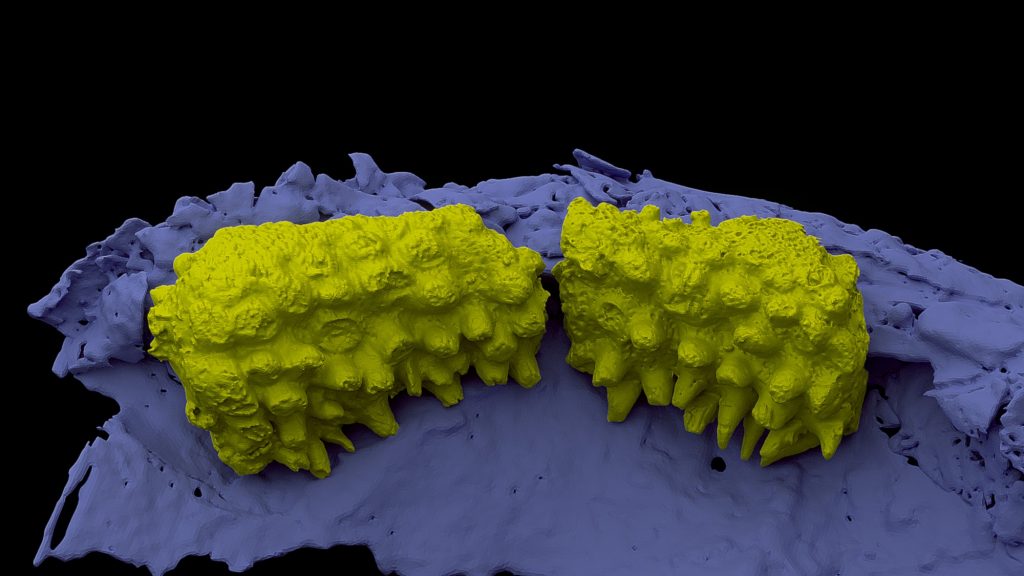 In the two extant jawed vertebrate groups, bony fish (and their descendants the land animals) and sharks, new teeth usually develop on the inner side of the old ones. Sharks have no bones and their teeth do not attach to the cartilaginous jaws, whereas in bony fish and land animals, the teeth are always attached to jaw bones. This diversity raises many questions about the origin of teeth. Until now, researchers have focused on fossils of a group of armoured fish, the arthrodires, the only stem jawed vertebrates in which teeth were known. They struggled to understand how they could have evolved into the teeth of modern vertebrates, as arthrodire teeth are so different in position and mode of tooth addition.
In the two extant jawed vertebrate groups, bony fish (and their descendants the land animals) and sharks, new teeth usually develop on the inner side of the old ones. Sharks have no bones and their teeth do not attach to the cartilaginous jaws, whereas in bony fish and land animals, the teeth are always attached to jaw bones. This diversity raises many questions about the origin of teeth. Until now, researchers have focused on fossils of a group of armoured fish, the arthrodires, the only stem jawed vertebrates in which teeth were known. They struggled to understand how they could have evolved into the teeth of modern vertebrates, as arthrodire teeth are so different in position and mode of tooth addition.
A team of scientists from the Charles University, Uppsala University, the European synchrotron ESRF in Grenoble, Natural History Museum in London, and the National Museum in Prague (Valéria Vaškaninová as a lead author) turned to the acanthothoracids, an early fish group closely related to the common ancestor of jawed vertebrates. The very finest of them come from the Prague Basin, but due to their fragility they have never been investigated in detail. The researchers used synchrotron microtomography at the European synchrotron, the world’s brightest X-ray source, which allowed them to visualise the internal structure of the fossils in 3D, including unexpected well-preserved dentitions. Follow-up scans at higher resolution visualized the growth pattern and perfectly preserved cell spaces inside the dentine.
Like arthrodires, the acanthothoracid dentitions are attached to bones. This indicates that bony fish and land animals retain the ancestral condition, whereas sharks are specialized. In other ways, acanthothoracid dentitions are fundamentally different from those of arthrodires. Like sharks, bony fish and land animals, acanthothoracids only added new teeth on the inside. Even though acanthothoracids are among the most primitive of all jawed vertebrates, their teeth are far more like modern ones than arthrodire dentitions. Their jawbones resemble those of bony fish and seem to be directly ancestral to our own.
Vaškaninová V., Chen D., Tafforeau P., Johanson Z., Ekrt B., Blom, H., Ahlberg P.E. (2020): Marginal dentition and multiple dermal jawbones as the ancestral condition of jawed vertebrates. Science 369, 211-216. (DOI)
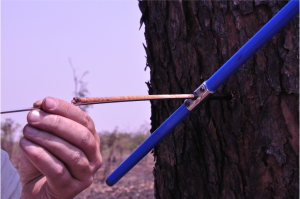 We used pine tree rings and soil geochemistry to expose the activity of a Pb-Zn smelter in Kabwe, Zambia. We found that local soils are extremely contaminated (up to 16000 mg/kg Pb; 14000 mg/kg Zn; 600 mg/kg Cu in the topsoil). Also, metal bearing particles share their Pb isotopic signature with smelting by-products, and more concerning, metals in tree biomass. We concluded that these metals enter the tree though the bark and leaves, not the roots, implying airborne contamination. Using Pb and C isotopes we mapped the dendrochronology of the tree and verified its susceptibility to changes in smelter production throughout the late 20th century.
We used pine tree rings and soil geochemistry to expose the activity of a Pb-Zn smelter in Kabwe, Zambia. We found that local soils are extremely contaminated (up to 16000 mg/kg Pb; 14000 mg/kg Zn; 600 mg/kg Cu in the topsoil). Also, metal bearing particles share their Pb isotopic signature with smelting by-products, and more concerning, metals in tree biomass. We concluded that these metals enter the tree though the bark and leaves, not the roots, implying airborne contamination. Using Pb and C isotopes we mapped the dendrochronology of the tree and verified its susceptibility to changes in smelter production throughout the late 20th century.








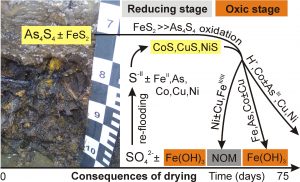 We combined selective chemical extractions and S isotopes to examine the mobility of As and trace metals (Co, Cu, Ni) in two Czech wetland soils enriched in authigenic Fe-As sulfide minerals through the drying process. We found that As and trace metals released via oxidation of the sulfide phases (particularly Fe sulfides) were almost entirely sequestered by Fe(III) (oxyhydr)oxides, but concomitant acidification resulted in the pH-dependent release of the As(III) and trace metals. Although our results documented the relatively low As mobilization potential under relatively short droughts (several weeks), the preservation of the anoxic conditions must be regarded as a fundamental management strategy of these and other sulfidic wetlands enriched in As.
We combined selective chemical extractions and S isotopes to examine the mobility of As and trace metals (Co, Cu, Ni) in two Czech wetland soils enriched in authigenic Fe-As sulfide minerals through the drying process. We found that As and trace metals released via oxidation of the sulfide phases (particularly Fe sulfides) were almost entirely sequestered by Fe(III) (oxyhydr)oxides, but concomitant acidification resulted in the pH-dependent release of the As(III) and trace metals. Although our results documented the relatively low As mobilization potential under relatively short droughts (several weeks), the preservation of the anoxic conditions must be regarded as a fundamental management strategy of these and other sulfidic wetlands enriched in As.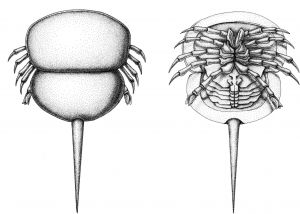 Today’s horseshoe crabs are often described as living fossils, mostly for their early appearance in the fossil record and their supposedly conservative morphologies. Nevertheless, after a careful investigation, one can find even peculiar species among this group of spider’s close relatives. Indeed, the recent marine representatives of horseshoe crabs (three genera, four species) are all members of one surviving clade called Limulidae. Deep in the past, during the Paleozoic and Mesozoic, some horseshoe crabs evolved into quite different morphologies and explored various environments. One group called Belinuridae comprises mostly late Paleozoic species that explored freshwater habitats. Lustri, Laibl and Bicknell, in their paper published recently in PeerJ (Lustri et al. 2021), redescribe small (about 3 cm long) and morphologically simple belinurid Prolimulus woodwardi. This species has been originally described by Antonín Frič, back in 1899, from the famous sapropelic coal of the Plzeň Basin. Based on numerous well-preserved specimens, the authors describe and clarify the species morphology, including such details as opercula and chelicerae. Phylogenetic analysis shows that Prolimulus is, together with some other morphologically similar genera, a member of highly paedomorphic (i.e., resembling juvenile stages of others closely related taxa) ingroup within Belinuridae. This discovery is further corroborated by morphometric results and by the fact that there are epibionts attached to some Prolimulus specimens. The presence of attaching organisms on the exoskeleton of Prolimulus suggests, that these small specimens are individuals that already stopped or significantly slowed the molting of their exoskeleton. In other words, they are adults that retain juvenile morphology. Such morphological and developmental plasticity, together with a successful exploration of freshwater habitats illustrates the horseshoe crab’s ability to adapt to various environmental conditions in the deep past.
Today’s horseshoe crabs are often described as living fossils, mostly for their early appearance in the fossil record and their supposedly conservative morphologies. Nevertheless, after a careful investigation, one can find even peculiar species among this group of spider’s close relatives. Indeed, the recent marine representatives of horseshoe crabs (three genera, four species) are all members of one surviving clade called Limulidae. Deep in the past, during the Paleozoic and Mesozoic, some horseshoe crabs evolved into quite different morphologies and explored various environments. One group called Belinuridae comprises mostly late Paleozoic species that explored freshwater habitats. Lustri, Laibl and Bicknell, in their paper published recently in PeerJ (Lustri et al. 2021), redescribe small (about 3 cm long) and morphologically simple belinurid Prolimulus woodwardi. This species has been originally described by Antonín Frič, back in 1899, from the famous sapropelic coal of the Plzeň Basin. Based on numerous well-preserved specimens, the authors describe and clarify the species morphology, including such details as opercula and chelicerae. Phylogenetic analysis shows that Prolimulus is, together with some other morphologically similar genera, a member of highly paedomorphic (i.e., resembling juvenile stages of others closely related taxa) ingroup within Belinuridae. This discovery is further corroborated by morphometric results and by the fact that there are epibionts attached to some Prolimulus specimens. The presence of attaching organisms on the exoskeleton of Prolimulus suggests, that these small specimens are individuals that already stopped or significantly slowed the molting of their exoskeleton. In other words, they are adults that retain juvenile morphology. Such morphological and developmental plasticity, together with a successful exploration of freshwater habitats illustrates the horseshoe crab’s ability to adapt to various environmental conditions in the deep past.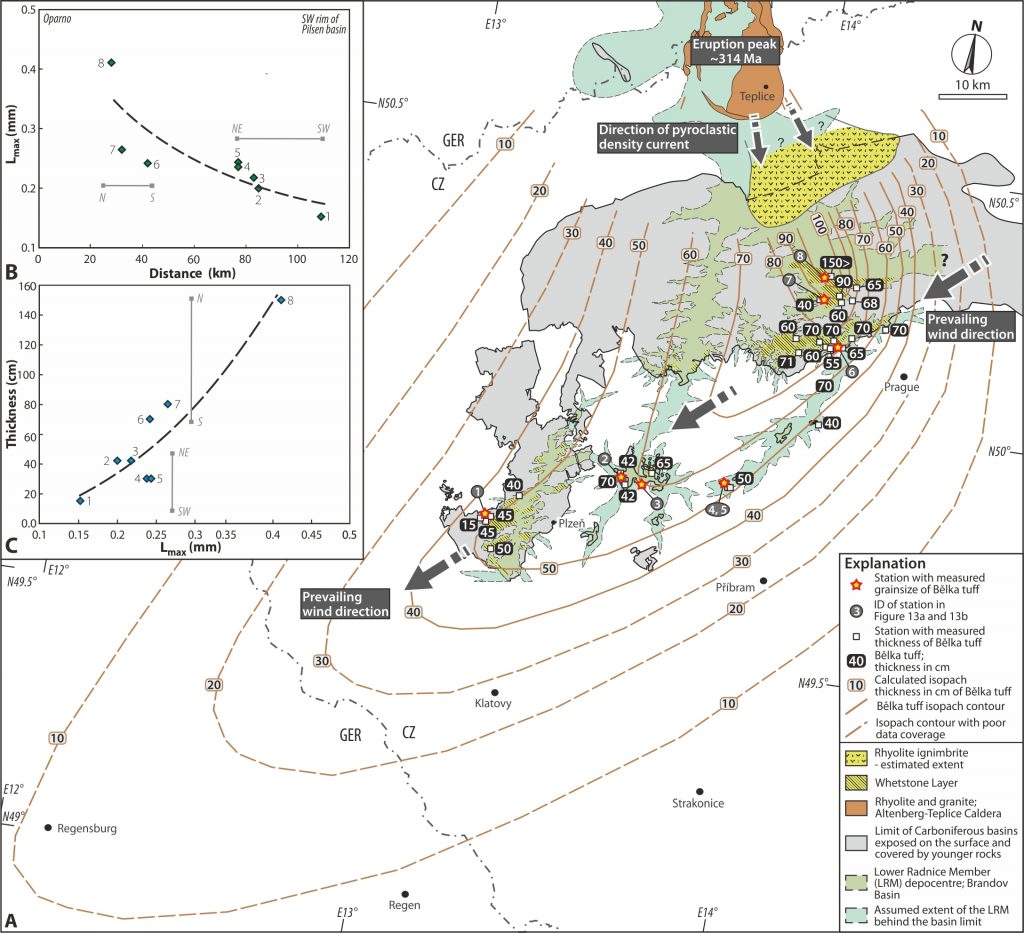 The famous Bělka tuff is a widespread pyroclastic layer preserved elsewhere in the central and western Carboniferous late- to post-orogenic basins. This tuff represents a unique stratigraphic marker documented from tens of boreholes and numerous black coal mines within a large area between the southern edge of the Pilsen Basin in western Bohemia to the eastern part of the Kladno-Rakovník Basin over a distance of 100 km. However, its volcanic source was until now unclear. In a new study by Tomek et al. published in International Geology Review, a multidisciplinary approach using the LA-ICP-MS U/Pb zircon dating, thickness and grain size distribution analysis, and volume calculation suggested that the source volcano is the Altenberg–Teplice Caldera located at Czech-German border in the NW Bohemian Massif. In detail, this volcano erupted a major caldera-forming ignimbrite eruption with an estimated volcanic explosivity index 7 (out of 8) at 314 Ma. The pyroclastic density currents travelled over a distance of ca. 60 km towards the area of Oparno valley (Porta Bohemica). From here, the northeastern winds distributed the volcanic ash cloud towards the southwest, where the ash was deposited in the sedimentary basins. The isopach reconstruction indicate that for instance in Regensburg (Germany), there was a 10 cm thick ash layer that originated from the Altenberg–Teplice Caldera nearly 220 km away.
The famous Bělka tuff is a widespread pyroclastic layer preserved elsewhere in the central and western Carboniferous late- to post-orogenic basins. This tuff represents a unique stratigraphic marker documented from tens of boreholes and numerous black coal mines within a large area between the southern edge of the Pilsen Basin in western Bohemia to the eastern part of the Kladno-Rakovník Basin over a distance of 100 km. However, its volcanic source was until now unclear. In a new study by Tomek et al. published in International Geology Review, a multidisciplinary approach using the LA-ICP-MS U/Pb zircon dating, thickness and grain size distribution analysis, and volume calculation suggested that the source volcano is the Altenberg–Teplice Caldera located at Czech-German border in the NW Bohemian Massif. In detail, this volcano erupted a major caldera-forming ignimbrite eruption with an estimated volcanic explosivity index 7 (out of 8) at 314 Ma. The pyroclastic density currents travelled over a distance of ca. 60 km towards the area of Oparno valley (Porta Bohemica). From here, the northeastern winds distributed the volcanic ash cloud towards the southwest, where the ash was deposited in the sedimentary basins. The isopach reconstruction indicate that for instance in Regensburg (Germany), there was a 10 cm thick ash layer that originated from the Altenberg–Teplice Caldera nearly 220 km away.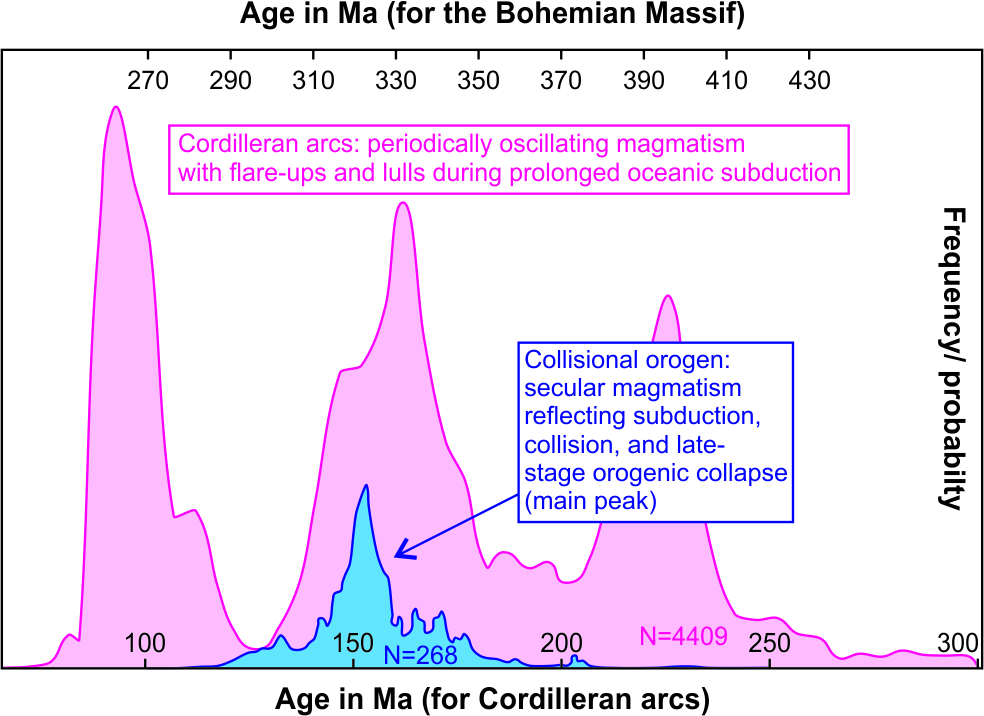 A new paper by Trubač et al. combines geochronologic data with a GIS-based spatial analysis of plutons in the Bohemian Massif, Variscan belt, to examine the magma fluxes and temporal pattern of plutonism during collisional orogeny. The collisional orogens differ from continental margin arcs, where the plutonic material is added in repeating cycles to the upper crust during protracted oceanic subduction. Instead, it was shown that the collisional plutonism reflects a secular thermotectonic evolution of the orogen, where magma sources change from mantle-dominated to intracrustal, paralleled by increasing significance of crustal recycling at the expense of crustal growth. The analysis also suggests that crustal thickening, commonly regarded as the main cause of plutonism in collisional orogens, may be of relatively lower significance than a late-stage mantle delamination.
A new paper by Trubač et al. combines geochronologic data with a GIS-based spatial analysis of plutons in the Bohemian Massif, Variscan belt, to examine the magma fluxes and temporal pattern of plutonism during collisional orogeny. The collisional orogens differ from continental margin arcs, where the plutonic material is added in repeating cycles to the upper crust during protracted oceanic subduction. Instead, it was shown that the collisional plutonism reflects a secular thermotectonic evolution of the orogen, where magma sources change from mantle-dominated to intracrustal, paralleled by increasing significance of crustal recycling at the expense of crustal growth. The analysis also suggests that crustal thickening, commonly regarded as the main cause of plutonism in collisional orogens, may be of relatively lower significance than a late-stage mantle delamination.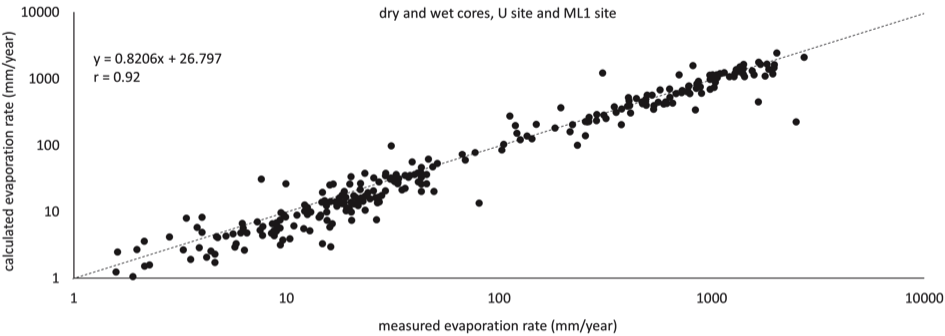 Evaporation from porous rock plays an important role in weathering and biological processes. Despite its importance, evaporation from porous rocks has seen little scientific focus. We present a study on evaporation from bare sandstone, one of the most common rocks affected by weathering. A new method that measures the evaporation rate from the surfaces of sandstone samples under field microclimate was developed and tested. Also, a simple calculation of 1D evaporation rate from bare sandstone surfaces based on Fick’s law of diffusion is presented. The measurement was performed using sandstone cores in a humid continental climate and measured on a roughly monthly interval for about 1 year. For the calculations, a laboratory-measured water-vapour diffusion coefficient of the sandstone, in-situ seasonally measured vaporization plane depth (depth below the surface where liquid water evaporates), and values of air humidity and temperature were used. It was found that the most important factor controlling the evaporation rate was the vaporization plane depth, while seasonal and spatial changes of air humidity and temperature were of lesser importance. The calculated evaporation rate reasonably follows measured values with Pearson correlation coefficient r > 0.81. For its simplicity and the small number of parameters required, the proposed method has the potential to improve knowledge of weathering and living conditions of endolithic and epilithic organisms.
Evaporation from porous rock plays an important role in weathering and biological processes. Despite its importance, evaporation from porous rocks has seen little scientific focus. We present a study on evaporation from bare sandstone, one of the most common rocks affected by weathering. A new method that measures the evaporation rate from the surfaces of sandstone samples under field microclimate was developed and tested. Also, a simple calculation of 1D evaporation rate from bare sandstone surfaces based on Fick’s law of diffusion is presented. The measurement was performed using sandstone cores in a humid continental climate and measured on a roughly monthly interval for about 1 year. For the calculations, a laboratory-measured water-vapour diffusion coefficient of the sandstone, in-situ seasonally measured vaporization plane depth (depth below the surface where liquid water evaporates), and values of air humidity and temperature were used. It was found that the most important factor controlling the evaporation rate was the vaporization plane depth, while seasonal and spatial changes of air humidity and temperature were of lesser importance. The calculated evaporation rate reasonably follows measured values with Pearson correlation coefficient r > 0.81. For its simplicity and the small number of parameters required, the proposed method has the potential to improve knowledge of weathering and living conditions of endolithic and epilithic organisms.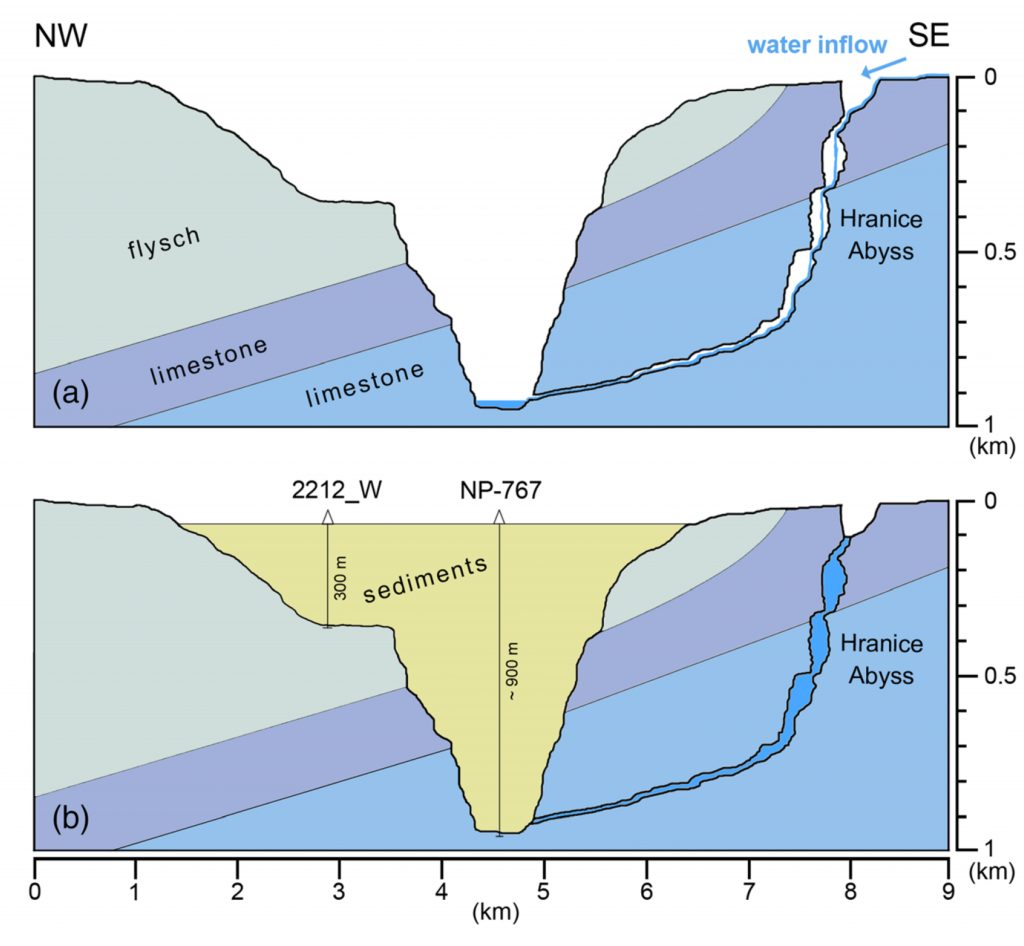 Extremely deep freshwater filled cave systems are common in karst systems globally. The origin and evolution of such caves are usually attributed to hypogenic (bottom‐up) processes, in which acidic groundwater dissolves limestone from below. A combined geophysical survey was applied to improve a subsurface image of semi-buried karst morphology in the close vicinity of Hranice Abyss (HA). Based on the results of electromagnetic surveying (AMT method), suggesting a deep disintegration of the carbonate sequence, a new possible depth of ~0.9 km of HA was estimated. An alternative hypothesis, suggesting predominantly epigenic evolution (top-down process) of the HA evolution, was introduced. Furthermore, an applicability of individual geophysical methods and their combinations has been evaluated on the basis of an integrated interpretation of geophysical data. This research attracted attention of media abroad (
Extremely deep freshwater filled cave systems are common in karst systems globally. The origin and evolution of such caves are usually attributed to hypogenic (bottom‐up) processes, in which acidic groundwater dissolves limestone from below. A combined geophysical survey was applied to improve a subsurface image of semi-buried karst morphology in the close vicinity of Hranice Abyss (HA). Based on the results of electromagnetic surveying (AMT method), suggesting a deep disintegration of the carbonate sequence, a new possible depth of ~0.9 km of HA was estimated. An alternative hypothesis, suggesting predominantly epigenic evolution (top-down process) of the HA evolution, was introduced. Furthermore, an applicability of individual geophysical methods and their combinations has been evaluated on the basis of an integrated interpretation of geophysical data. This research attracted attention of media abroad (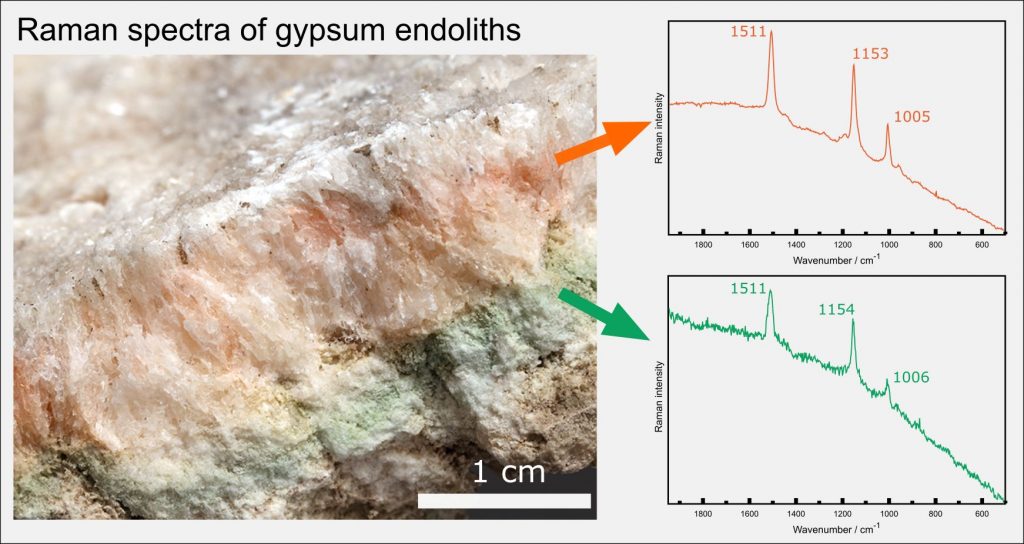
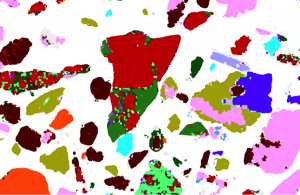 Automated mineralogy has been used to quantitatively determine the contaminant partitioning in the soil particulates originating from heavily polluted mining/smelting sites. This method provides faster data acquisition, the full integration of the quantitative EDS data and better detection limits for the elements of interest. AutoSEM was found to be a useful tool for the determination of the modal phase distribution and element partitioning in the metal(loid)-bearing (As, Cu, Pb, Zn) soil particulates and will definitely find more applications in environmental soil sciences in the future.
Automated mineralogy has been used to quantitatively determine the contaminant partitioning in the soil particulates originating from heavily polluted mining/smelting sites. This method provides faster data acquisition, the full integration of the quantitative EDS data and better detection limits for the elements of interest. AutoSEM was found to be a useful tool for the determination of the modal phase distribution and element partitioning in the metal(loid)-bearing (As, Cu, Pb, Zn) soil particulates and will definitely find more applications in environmental soil sciences in the future. In the two extant jawed vertebrate groups, bony fish (and their descendants the land animals) and sharks, new teeth usually develop on the inner side of the old ones. Sharks have no bones and their teeth do not attach to the cartilaginous jaws, whereas in bony fish and land animals, the teeth are always attached to jaw bones. This diversity raises many questions about the origin of teeth. Until now, researchers have focused on fossils of a group of armoured fish, the arthrodires, the only stem jawed vertebrates in which teeth were known. They struggled to understand how they could have evolved into the teeth of modern vertebrates, as arthrodire teeth are so different in position and mode of tooth addition.
In the two extant jawed vertebrate groups, bony fish (and their descendants the land animals) and sharks, new teeth usually develop on the inner side of the old ones. Sharks have no bones and their teeth do not attach to the cartilaginous jaws, whereas in bony fish and land animals, the teeth are always attached to jaw bones. This diversity raises many questions about the origin of teeth. Until now, researchers have focused on fossils of a group of armoured fish, the arthrodires, the only stem jawed vertebrates in which teeth were known. They struggled to understand how they could have evolved into the teeth of modern vertebrates, as arthrodire teeth are so different in position and mode of tooth addition.